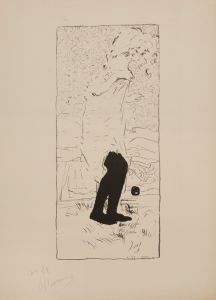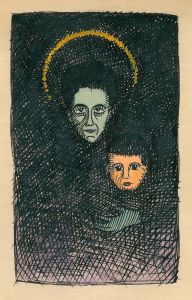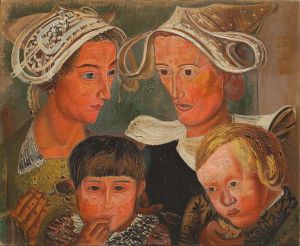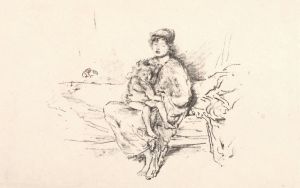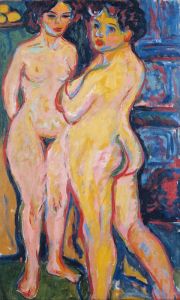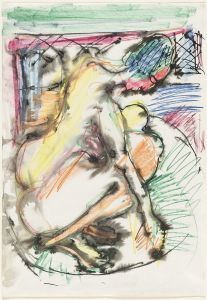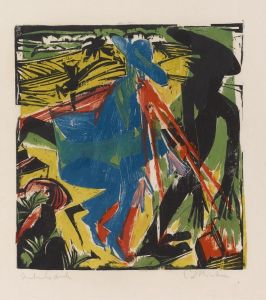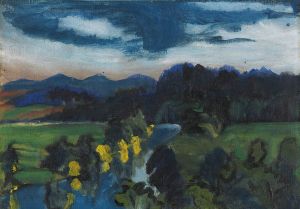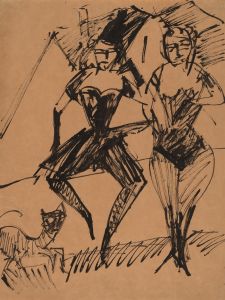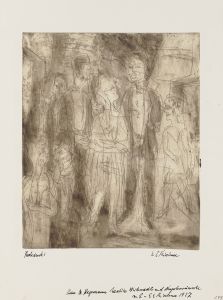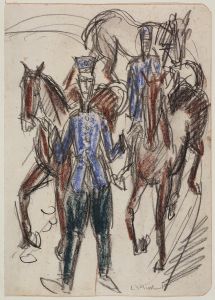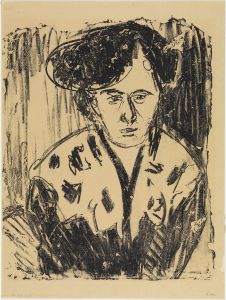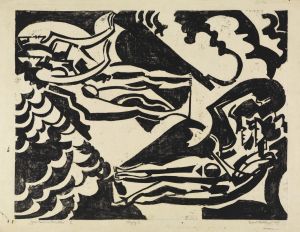
Das Paar
A hand-painted replica of Ernst Ludwig Kirchner’s masterpiece Das Paar, meticulously crafted by professional artists to capture the true essence of the original. Each piece is created with museum-quality canvas and rare mineral pigments, carefully painted by experienced artists with delicate brushstrokes and rich, layered colors to perfectly recreate the texture of the original artwork. Unlike machine-printed reproductions, this hand-painted version brings the painting to life, infused with the artist’s emotions and skill in every stroke. Whether for personal collection or home decoration, it instantly elevates the artistic atmosphere of any space.
Ernst Ludwig Kirchner was a prominent German expressionist painter and one of the founding members of the artist group Die Brücke (The Bridge), which played a pivotal role in the development of modern art in the early 20th century. Kirchner's work is characterized by its bold use of color, dynamic compositions, and a focus on the human figure, often exploring themes of modernity and urban life.
"Das Paar" (The Couple) is one of Kirchner's notable works, reflecting his distinctive style and thematic interests. Painted in 1924, this piece exemplifies Kirchner's exploration of human relationships and emotional expression through art. The painting depicts a man and a woman, rendered in Kirchner's characteristic expressionist style, which emphasizes emotional experience over realistic representation.
In "Das Paar," Kirchner employs a vivid color palette, using contrasting hues to create a sense of tension and dynamism within the composition. The figures are elongated and stylized, a common feature in Kirchner's work, which serves to convey psychological depth and emotional intensity. The background is often abstracted, focusing the viewer's attention on the interaction between the two figures.
Kirchner's work during this period was heavily influenced by his personal experiences and the socio-political context of post-World War I Germany. The 1920s were a time of significant upheaval and change, and Kirchner's art often reflects the complexities and anxieties of this era. "Das Paar" can be seen as a reflection of the changing dynamics of relationships and the exploration of identity in a rapidly modernizing world.
The painting also demonstrates Kirchner's interest in non-Western art forms, which he encountered through ethnographic museums and collections. This influence is evident in his use of bold lines and simplified forms, reminiscent of African and Oceanic art, which Kirchner and his contemporaries admired for their perceived authenticity and emotional directness.
Kirchner's life and career were marked by both success and struggle. After serving in World War I, he suffered from a nervous breakdown and spent time in sanatoriums, which influenced his later work. Despite these challenges, Kirchner continued to produce art that was innovative and influential, contributing significantly to the expressionist movement.
"Das Paar" is housed in the Kunstmuseum Basel, which holds one of the most comprehensive collections of Kirchner's work. The museum's collection provides insight into the evolution of Kirchner's style and the breadth of his artistic achievements. Kirchner's legacy is evident in the continued appreciation and study of his work, which remains influential in the discourse of modern art.
Overall, "Das Paar" is a testament to Kirchner's ability to capture the complexities of human emotion and the spirit of his time through his unique artistic vision. The painting remains a significant example of expressionist art, illustrating Kirchner's mastery of color, form, and composition to convey profound psychological and emotional narratives.





